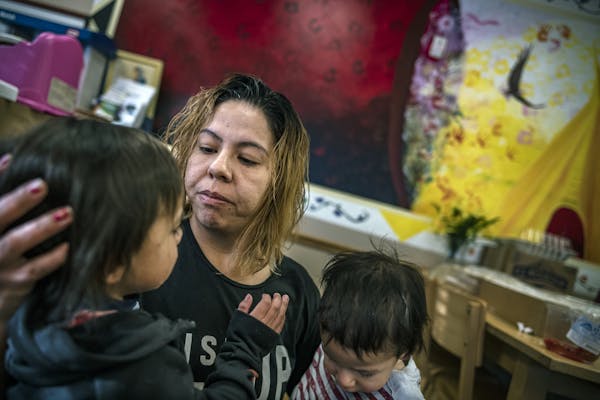Ramsey County, already home to the largest percentage of foreign-born residents in the state, will continue to welcome refugees.
The County Board unanimously voted Tuesday to continue to accept refugees, noting that the county resettled more refugees than any other in Minnesota last year.
"We recognize that refugees and foreign-born residents are an important part of Ramsey County," said Board Chairwoman Toni Carter. She added: "It's important we honor and respect all who are among us."
Ramsey County accepted 4,215 refugees from 2015 to 2019, according to a county report. In the past year, the county accepted 71% of all refugees who initially settled in Minnesota, compared with 12% in Hennepin County and 8% in Anoka County, said Elizabeth Tolzmann, Ramsey County's policy and planning director.
The Washington County Board also voted unanimously Tuesday to continue to accept refugees. Refugee resettlement is hardly an issue in the county, where just nine refugees settled last year, according to Deputy County Administrator Kevin Corbid. He said Minnesota saw 900 refugees arrive last year, most of them joining relatives already in the state.
The Trump administration issued an executive order in September requiring all local governments to submit their written consent to the U.S. Department of State before refugee resettlement could continue, sparking intense debate in some communities across Minnesota and the nation.
Last week, Beltrami County became the first Minnesota county to ban refugee resettlement. About 1.7% of Beltrami County's 47,000 residents are foreign-born, according to the U.S. Census Bureau.
At Tuesday's Ramsey County Board meeting, several commissioners spoke passionately in favor of accepting refugees, saying they add to the workforce, tax base and the region's cultural mosaic.
"For me this is a celebration of our good work and the good work of our refugee communities," said Commissioner Trista MatasCastillo. "We have all benefited from having refugees in our community."
MatasCastillo said she's received e-mails from those defending refugee resettlement and others opposing it who point to rising numbers of homeless people, lagging care for veterans and other problems.
"We can do both," said MatasCastillo, her voice breaking with emotion. "I reject the notion that refugees are a burden we can't afford."
Commissioner Victoria Reinhardt said that, aside from Native Americans, nearly all Americans can trace their roots to immigration. "I am glad this country welcomed my German and Irish ancestors. That is what makes this place rich," she said.
The board did not allow public comment before the vote, and few members of the public were in attendance.
St. Paul resident Antonio Nerios quietly took pictures on his phone during the meeting. Outside the chambers, he said the public should have had more input and criticized holding board meetings on a midweek morning when many working people can't go. He said he's heard the frustration on social media.
"They feel like the commissioners are not listening to their voices," said Nerios, chairman of the newly formed Veterans Party of Minnesota, which has an office in White Bear Lake.
Nerios said he personally did not agree with the board's vote.
"I think we have enough," he said. "We need to solve the problems at DHS," referring to the financial problems and mismanagement that have rocked the Minnesota Department of Human Services in recent months.
About 16% of Ramsey County's overall population is foreign-born, higher than that of neighboring Hennepin County, where foreign-born residents make up 14.1% of the population.
The number of refugees the U.S. accepts has fallen under the Trump administration. The country plans to admit 22,000 refugees in fiscal year 2020, according to a Pew Research Center report.
"This would be the lowest number of refugees resettled by the U.S. in a single year since 1980, when Congress created the nation's refugee resettlement program," according to the report.
From 1990 to 1995, an average of about 116,000 refugees arrived annually in the U.S., with many coming from the former Soviet Union. The U.S. largely suspended admissions following the Sept. 11 terrorist attacks in 2001 but those numbers bounced back, with the U.S. taking in an average of 67,100 refugees each year from 2008 to 2017, according to the Pew report.
From 2001 to 2019, the most refugees have come from Burma (about 177,700), Iraq (144,400) and Somalia (104,100), according to Pew.
Minnesota took in just 663 refugees in 2018, the lowest number in more than a decade. The state resettled more than 5,000 in 2005.
Staff writers Matt McKinney and Maya Rao contributed to this story.
Shannon Prather • 651-925-5037

A tale of 124 hoarded Minnesota cats has at least a hundred happy endings

Walz, St. Paul leaders urge support for copper wire theft bill: 'We've got to get in front of it'
Body of missing canoeist, 15, recovered from southwest Minnesota lake

High winds flipped a FedEx truck traveling on Bong Bridge in Duluth

